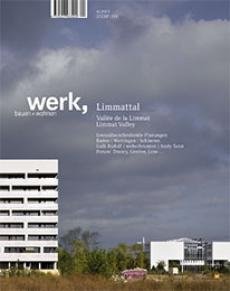Editorial
The Limmattal is an agglomeration. It is representative of the kind of space that is spreading endemically between core cities everywhere, growing around former village centres and small towns, along transport infrastructures and at residential complexes set in an attractive landscape. Wide transport corridors for trains and cars, large industrial sites and urbanized village centres characterize the Limmattal. Yet it also includes a very urban small town like Baden, the community of Schlieren with its strong industrial tradition, and Spreitenbach, a widely visible symbol of the boom years and of their fascination with the motor car, which is marked by the high-rise buildings and shopping centres that grew up there beside the modest rural village.
Today, in the middle of a new boom, the Limmattal is experiencing a further wave of urbanization. Industrial sites are being redeveloped at an urban density. And the planned Limmattal tramway will bring the region more than just an infrastructure: long before the tracks have been laid this project is already developing a new shared consciousness in the areas it will affect. The Limmattal is becoming recognizable as a dense, continuous habitat, forcing us to define the term agglomeration somewhat differently. In this magazine we once used the term „suburb“ (wbw 10|2010); today the developers from the real estate business speak of „city“. However, „city“ always remains just a metaphor, a projection. The settlement in the Limmattal will never look as urban as the old core cities Zürich and Baden. Conversely, even with a high density it has positive values that such cities cannot offer – here we are talking about proximity to green space or a greater acceptance of individual freedom and mobility. At a time of rapid – and not always controlled – growth, interesting simultaneities are occurring that make the Limmattal area appear as a paradigm of a normal kind of settlement that is developing throughout Switzerland – and perhaps even make it desirable from an „urban“ point of view.
But, although the present issue qualifies the classic contrast between town and country, it is still used - one last time? – to characterize the „agglo“, which for some time now has no longer been just ugly.
Similar to the way in which, since the Enlightenment, the „country“ or the countryside represented something „other“ for urban elites – with productive possibilities for the economy, culture and lifestyle – the Limmattal, as representative of the Swiss Central Plateau, could, to use the concepts of psychologist Jacques Lacan, also be an „other“ – „un autre“ – different to the densely put together core cities Baden and Zürich, which not only provides commissions and vital images for architects from the city but also arrives at its own self-awareness as a shared area and discovers its own identity and assertiveness.
